Vetonit: product description and characteristics
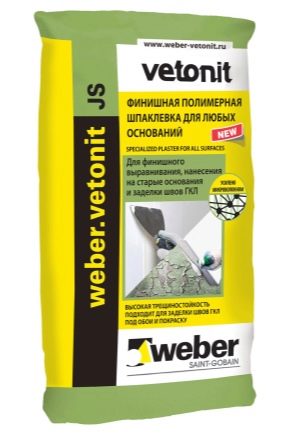
Today one of the most demanded building materials is various dry mixes. They are easy to use, reliable and inexpensive. However, these words cannot describe the entire assortment on the market. In order not to purchase goods of inadequate quality, you must give preference to products from trusted manufacturers, which is rightfully Vetonit.
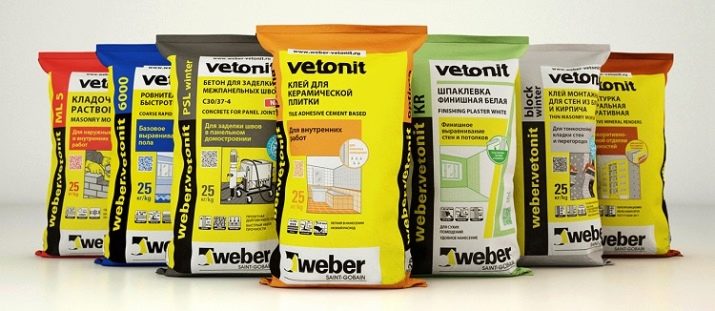
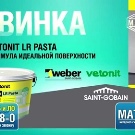

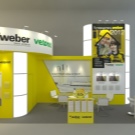
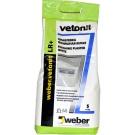
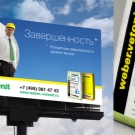
Peculiarities
The company produces powdery building mixtures, which are widely used in decoration and construction. The most popular are the finishing putty and screed of this brand, as well as tile adhesive. In our country, there is an industry division of the international group of companies Saint-Gobain called Weber-Vetonit, which represents dry mixes of the Vetonit brand on the domestic market.
The most popular are putties, plasters and self-leveling floors from Vetonit.
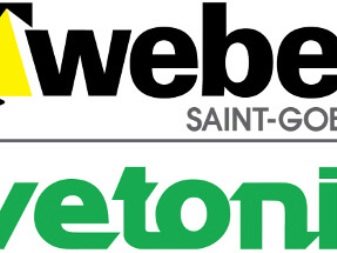
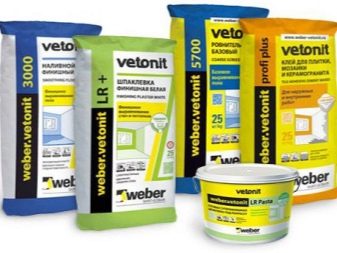
Putty
The mixture is used at the stage of final leveling of various surfaces. The quality and general appearance of the finished work depends on the correctness of the application. Vetonit putty is designed to fill cracks and crevices and create a perfect surface after basic work.
Depending on the composition, there are three types of such a mixture: gypsum, polymer and cement. They can be applied both on ordinary concrete or brick, and on drywall and even on painted walls, both inside and outside the room. And on the putty itself, it is allowed to apply any decorating coatings - tiles, wallpaper, various paints and decorative plasters.
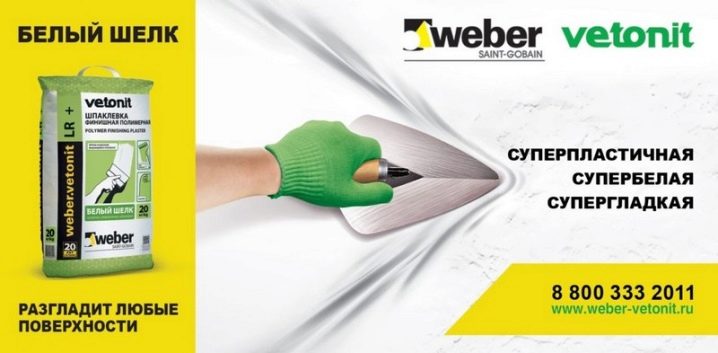
The advantages of Vetonit products are the versatility and environmental friendliness of the putty. Created from components that are safe for both nature and humans, it can even be used to decorate the indoor pool. The powder particles of such a mixture are so small that the finished putty layer has an almost mirror-like smoothness. It is resistant to aggressive weather conditions such as frost or hail, therefore it is suitable for facade finishing and can be applied even at sub-zero temperatures.
In addition to decorative properties, Vetonit increases the thermal insulation of the room and enhances the sound absorption of surfaces.
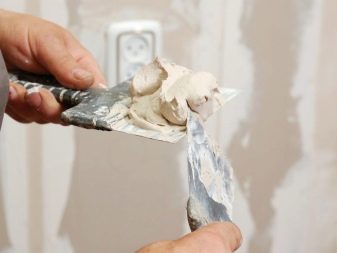
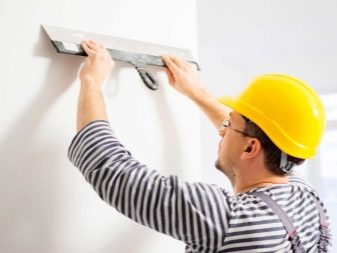
Plaster
On the domestic markets, there are several types of dry plaster from the Vetonit company, which are supplied both from abroad, for example, Finnish mixtures, and are made directly at Russian factories. As a rule, these are cement mixtures with sand or limestone and additional components in the composition in the form of various microfibers.
Customers can choose from one of the universal mixes to suit most substrates, or a custom decor mix. Such decorative plasters can be applied to surfaces treated with a conventional composition and create a relief pattern with their help.
One of the advantages of Vetonit dry mix is the ability to apply to almost any surface, from concrete and brick to ceramics and plaster. Subsequent finishing is also possible with most of the known coatings - wallpaper, tiles, putty and even glass decorative plates. The plaster is waterproof and not subject to deformation in frost, which allows it to be used for exterior decoration of facades and rooms with high humidity. It adheres perfectly to most surfaces and hardens without shrinkage.
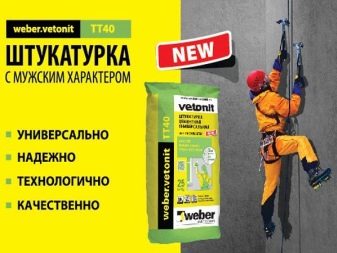
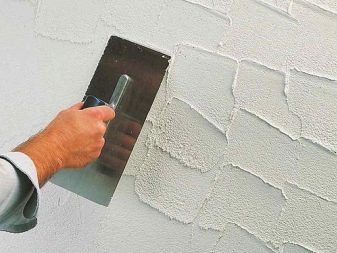
Self-leveling floors
The self-leveling Vetonit mortars, used as screeds, make it possible to create an ideal self-leveling floor with a thickness of 1 to 250 mm in one pass. The solution is suitable for the renovation and decoration of both new residential and office premises and buildings with a long service life.
The advantage of the brand is its high compressive strength, which allows the coating to withstand significant loads. Additional internal regulation will further strengthen this indicator. The self-leveling floor can be covered with even very thin finishing materials or left without finishing at all, since it has a smooth surface and does not require sanding.
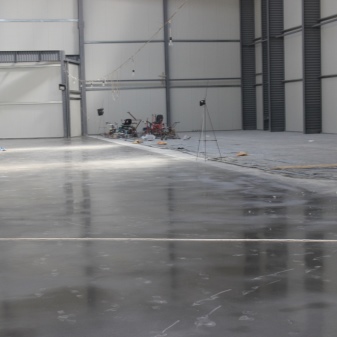
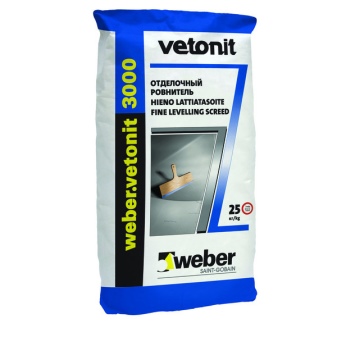
The mixture quickly gains strength, which implies the ability to walk on such a floor within two to three hours after laying. It can be poured even over wood or ceramics due to the presence of special polymers in the composition.
The Vetonit self-leveling floor is moisture and heat resistant, and also represents a soundproof surface.
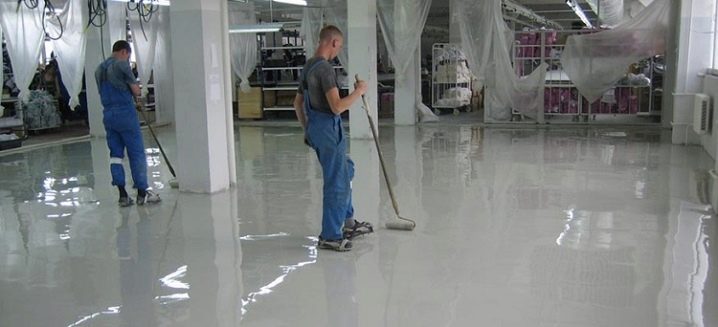
Specifications
- The putty is available in the form of a dry powder, packaged in 5, 20 or 25 kilograms. The containers are three-layer bags, the middle layer of which is made of polyethylene, and the outer and inner layers are made of paper. It is also possible to release in the form of a paste in plastic trays of 10-12 liters.
- The binder can be one of the following: limestone, gypsum, glue or cement. The shade of the finished coating corresponds to the color of the mixture itself when dry. It can be with a predominance of white, gray or yellow pigment.
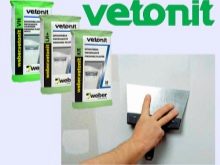
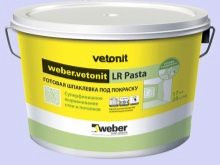
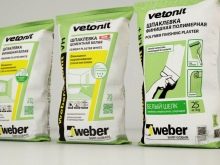
- Fine-grained mixture, powder grain size - 0.3-0.5 mm in dry mixture and no more than 0.06 mm in pasty.
- The air temperature when working with the mixture should range from +5 to +25 for conventional formulations and at least -10 degrees for special frost-resistant ones.
- For 1 square meter, 1.2-1.4 kg of dry mix is required to create a 1 mm thick coating layer. Grouting is more economical, only 100-200 grams per 1 m2 of surface is needed. 1 kg of the mixture will require about 300-350 ml of water.
- The diluted putty should be used within 1.5-2 hours. If the composition contains polymers, then the time increases to 12-24 hours. Re-dilution of the frozen mixture is not recommended. The applied putty hardens in 3 hours, and dries completely and is ready for further processing in at least a day.
It is recommended to apply a layer no more than 1 mm thick in one pass. The adhesion coefficient of the composition is 0.9-1 MPa, and the mechanical load that it can withstand in finished form is about 10 MPa. In a dry room with a humidity of less than 60%, Vetonit putty can be stored for 12-18 months, provided that the original container is intact.

The technical characteristics of the Vetonit brand plaster are in many ways similar to the characteristics of the putty.
- The plaster is also packed in paper bags of 5, 20 and 25 kilograms. Decorative types of mortar can be sold in plastic trays of 15 kg.
- Cement acts as an astringent, due to which the color of the finished coating is obtained with a gray tint.
- The size of the fraction of dry matter is not more than 1 mm for simple plaster and from 1.5 to 4 mm for decorative.
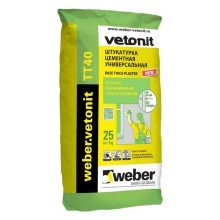
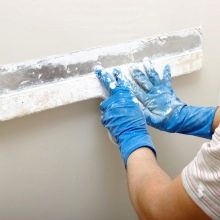
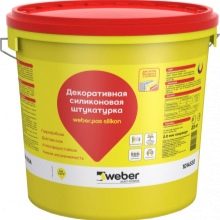
- The solution is applied at an air temperature of +5 to +30 degrees using ordinary plaster. When buying a special frost-resistant mixture, the temperature can drop to -10 degrees.
- To apply a layer of 1 mm on an area of 1 square meter, you need to take from 1.2 to 2.4 kg of dry powder. Water consumption per 1 kg of plaster powder is from 200 to 300 ml, depending on the recommendations on the package.
- It is necessary to use the plaster within 2-3 hours, and one layer of it 2-10 mm thick dries completely within 2 days.
- The coefficient of adhesion to concrete is 0.5 MPa, and the load that the coating can withstand is 6-8 MPa.
- Vetonit plaster is stored for a year, provided that the original packaging is intact.
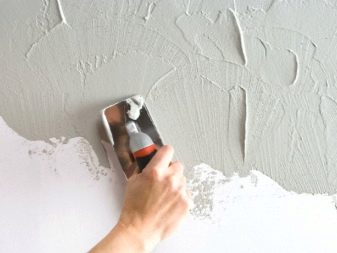
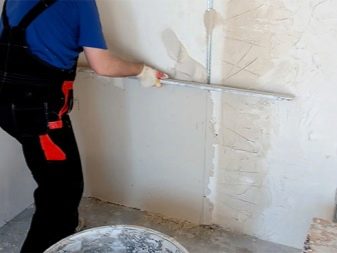
The technical parameters of the self-leveling mixture for laying on the floor also differ little from other mixtures.
- The Vetonit self-leveling floor is available in large paper bags of 5 and 25 kilograms.
- The middle layer of the package, like the putty, is made of polyethylene.
- The binder is a special cement that causes the finished coating to have a gray tint.
- Powder particles ranging in size from 0.6 mm to 3 mm allow a finished layer thickness of 1 mm to 250 mm.
- Consumption of dry mix when applied with a layer of 1 mm is 1.4-1.8 kg per square meter. For the preparation of plaster for 1 kg of dry powder, 200-300 ml of water is required.
- The allowed temperature for working with the mixture is from + 10 to + 25 degrees.
- The prepared solution should be immediately applied to the surface, as it begins to harden within 15-20 minutes. The time for complete drying is 2 - 3 hours, and an hour after application to the floor, you can walk on the coating.
- Shrinkage of the hardened mortar by 0.5 mm / m is possible.
- The coefficient of adhesion of the composition to concrete is 1 MPa, and the permissible load on the surface is up to 30 MPa.
- Unpacked containers allow storing the plaster for 6-12 months in a dry room.
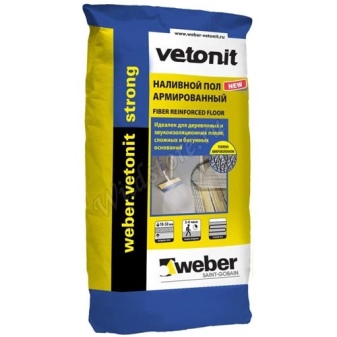
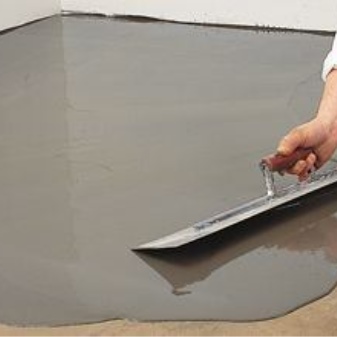
Varieties
Depending on the purpose, the putty can be:
- leveling, which is applied to concrete or plaster before subsequent decorative finishing;
- for seams;
- for a surface that has already been painted before.
Each of these types of putty is represented by the Vetonit trademark under its own name and price.
- Finish-LR + and Finish-KR are used for work in dry rooms and are used for finishing walls and ceilings. The average cost of one package of such a mixture is from 650 to 700 rubles.
- Superfinish Finish-KR, JS Plus and LR-paste are designed to give perfect smoothness at the last stage of finishing work, and putty Siloite gyproc JS intended exclusively for grouting plasterboard joints.
- Perfect for working in rooms with high humidity Finish VH the price of 600-650 rubles per package.
- And for facades, you should choose a mixture "Rend Facade" for 450 rubles.
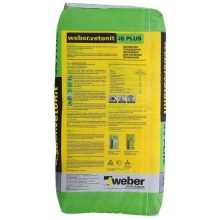
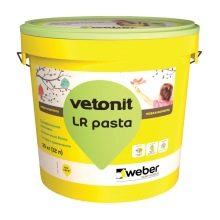
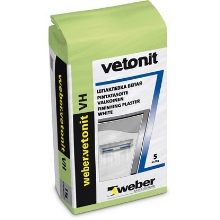
Depending on the type, plaster is necessary in the following cases:
- full alignment of ceilings and walls;
- alignment of certain areas of the surface for subsequent finishing work;
- applying a decorative plaster layer for further painting inside and outside the room.
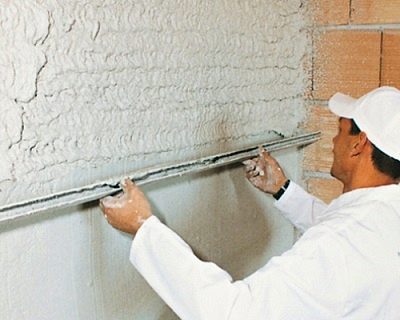
Cement-based plaster marked "TT" and "TTT" has increased frost resistance and moisture resistance, which allows you to use it for outdoor work. The cost of one package of such a mixture ranges from 350 to 400 rubles. Also cement mix "Stuk cement" can be used as a facade plaster, which can be applied in a layer up to 5 cm. The lime-cement composition of plaster grade 414 includes special microfibers, which increase the strength and coefficient of adhesion.
Decorative types of plaster min 1.5 Z, min 2.0 Z and min 2.0 R allows you to create the effect of "fur coat" and "bark beetle" and are sold at prices ranging from 1,600 to 2,000 rubles per package of 25 kilograms. Textured plaster marked min 1.5 winter allows finishing work at temperatures from -10 degrees.
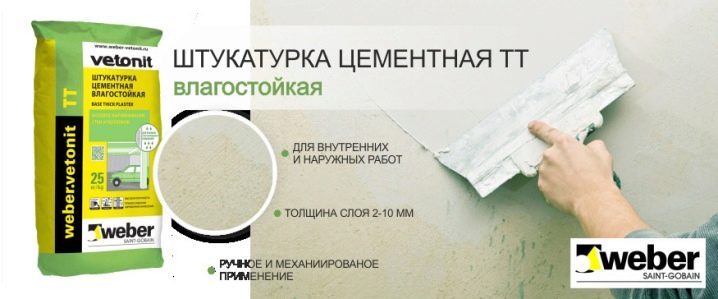
The main purpose of self-leveling screeds is:
- creation of a "warm floor" system;
- creation of flooring on unheated balconies and terraces;
- the creation of screeds for the subsequent decorative coating;
- leveling rough surfaces made of concrete or cement.

There are many types of Vetonit self-leveling floor.
- These are the usual brands 4150 and 4350 in the price range from 550 to 1000 rubles, and a mixture of 4601 for industrial premises.
- Universal self-leveling compounds 3000, 3100 and 4000 can be used both for interior work and for finishing open balconies and areas.
- The fast-drying “Fast Level” and 4100 leveling boards are laid with a thickness of 3 to 60 mm and are used on simple substrates
- ... A cheaper option is mixtures numbered 5700 and 6000.The first self-leveling mixture costs about 300 rubles, and the Vetonit 6000 self-leveling floor, hardening within 3 hours, is sold at a price of 375-385 rubles per package of 25 kilograms.
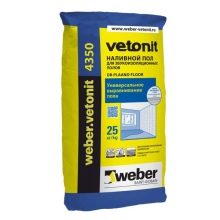
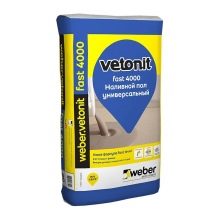
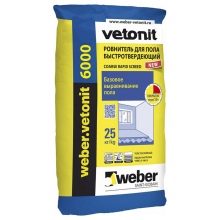
In addition to the above products, various adhesive mixtures are also presented on the domestic market. The price range for glue from the Vetonit company ranges from 200 to 1000 rubles, depending on the purpose.
- For example, Profi Plus is sold for working with porcelain stoneware, Mramor for working with light tiles and therm S100, which is a versatile material.
- All of them are used for interior work, and in order to glue building materials outdoors, it is worth choosing "Easy fix" or "Ultra fix".
- For finishing the facade, you can purchase an adhesive mixture of the "Ultra fix winter" brand, and for work in rooms with high humidity, dry Optima glue is perfect.
- There are grades of adhesive mixture of rather narrow application, for example, Vetonit MW is used only for joining boards made of mineral wool.
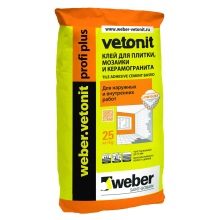
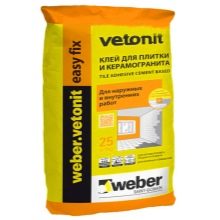
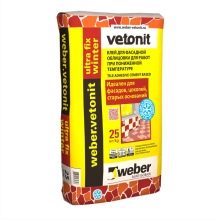
Vetonit also produces mixtures for brick and stone masonry, primer and grout, and even furnace mixtures that can withstand high temperatures and are used for the construction of fireplaces and stoves. Colored cementitious grouts are perfect for finishing joints of various sizes, and for rooms with a high temperature drop, it is worth purchasing two-component epoxy compounds. On the shelves you can find all kinds of primers, paints, impregnations and antiseptics. The so-called "dry concrete" is produced for pouring into molds.
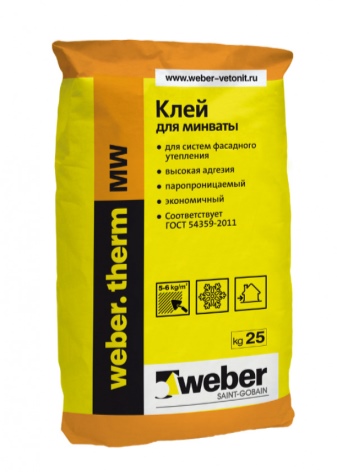
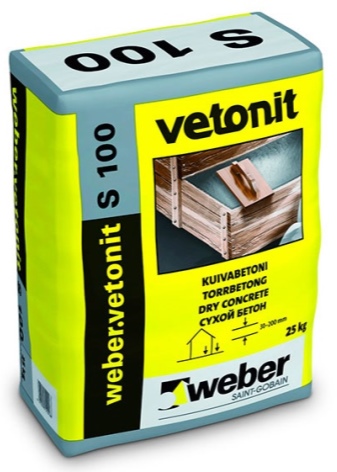
Scope of application
Depending on the type of dry mix, whether it be putty, plaster or self-leveling floor, the scope of its application can vary significantly. One type can be used to putty walls only in dry rooms, while others - in damp rooms. There are both frost-resistant mixtures, as well as mixtures, for work with which a temperature of more than 5 degrees is required.
There is a special adhesive for granite, floor and wall tiles, drywall and even facade work. There are special mastics for the installation of flexible waterproofing.
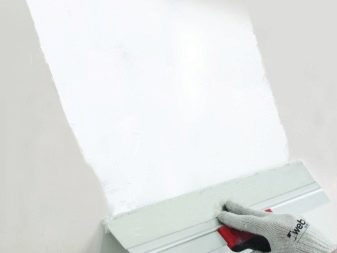
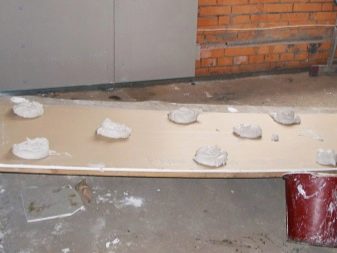
All Vetonit dry mixes must be applied to previously prepared surfaces from which the old finish has been removed. It is best to dilute such mixtures with warm water, based on the instructions on the package. You can stir the solution either mechanically or simply by hand, after which you need to let the solution brew for 10 minutes.
A large volume of solution should not be diluted at once, so that during the work the residue does not thicken and lose its properties.
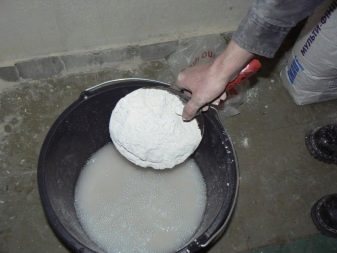
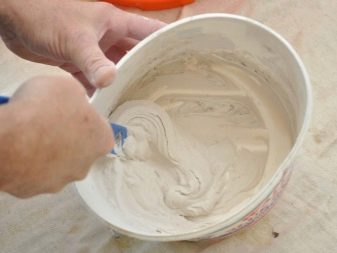
How to choose?
The guarantee of an excellent result, even for such a high-quality product as Vetonit, is the correct selection of the mixture for certain conditions. For example, for wet rooms, it is worth choosing mixtures based on cement, and for dry rooms, all types of mixtures can be used. Plaster solutions for indoor work will not retain their properties when finishing the facade, and the facade plaster will not look very aesthetically pleasing in a residential apartment.
Do not exceed the maximum permitted thickness of the coating, as this will lead to partial or complete deformation of the coating.
It is best to select the filler depending on the work surface for a better adhesion of the materials. So, on concrete it is best to put a mixture intended for working with concrete, and on a brick - with a brick.
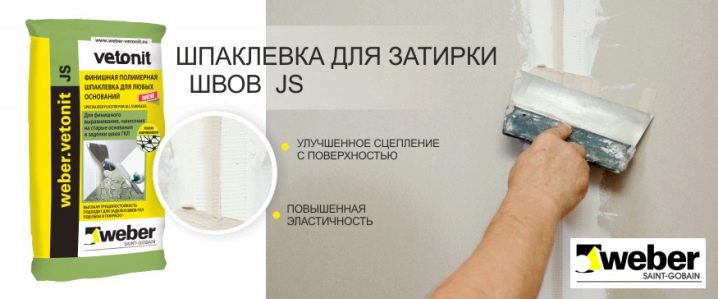
It is also necessary to take into account the very purpose of the mixture. For example, a self-leveling screed on which subsequent finishing is supposed to be applied should not be laid as a finishing floor covering and vice versa. It is also worth paying attention to the temperature at which work with this or that composition is allowed.
Vetonit products are easily recognizable by yellow or white bags with the manufacturer's logo and the name of the product on the black part of the stripe on the left. The colored part of this strip contains information about the brand of the product.
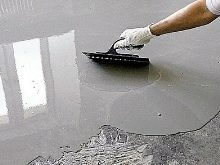
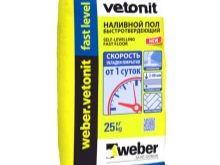
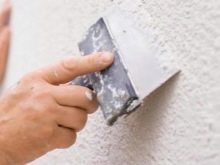
Tips & Tricks
In general, work with dry building mixes Vetonit is carried out according to the same algorithm as work with mixes from other manufacturers. The instructions for creating a solution are always indicated on the manufacturer's packaging and is the best option for its preparation.
- Putty of this brand can be applied to the work surface both with the help of special mechanisms and installations, and manually, using a rule and a spatula.
- The surface must be pre-prepared - free from old finishes, dirt and dust. It must be dry, free from oil or grease stains, and sufficiently firm.
- There should be no drafts in the room being finished, so it is better to close windows and doors.
- The mixture does not have harmful vapors or strong odors, so working even in a completely closed room will not cause any deterioration in well-being.
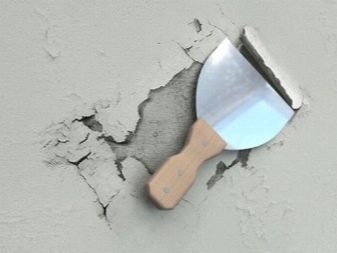

In order to prepare the mixture according to the instructions on the package, it is best to choose a plastic container. The water into which the powder is gradually poured should be at room temperature 20 - 25 degrees. Do not change the sequence and pour water into the powder, as this can lead to the mixture becoming too liquid, and there will be no excess powder left to correct the error.
The resulting solution must be thoroughly mixed with a drill with a special nozzle or mixer for 5 minutes and let it brew for 5-10 minutes. After that, the solution is mixed again and started to work.
Each layer of putty must be allowed to dry completely before proceeding with the next one. The time it takes to dry can vary from a couple of hours to a day, depending on the brand. The finished surface is usually sanded with fine-grained sandpaper and cleaned of dust.
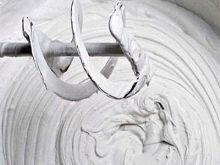


Vetonit plaster
- When working with plaster, the surface cleaned of dust, old coating and dirt, if necessary, is additionally reinforced with a special mesh. Grease and oil stains are removed, irregularities are putty. If the surface of the wall or ceiling is concrete, then a primer must be applied to them in front of the plaster in two layers so that the concrete does not draw moisture from the applied solution.
- Dry powder is added to warm (20 - 25 degrees) water and stirred with a drill or mixer. In order to increase the adhesion coefficient of the plaster, 10% of the water in the solution can be replaced with a liquid primer. Stir the plaster until all the lumps disappear. It is not necessary to insist on such a solution, otherwise it will immediately begin to harden. In the process of working with plaster, you should not add water to the solution; stir it without adding liquid.
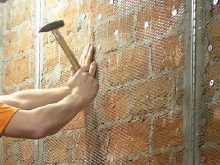
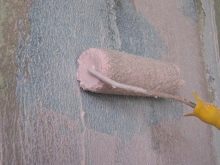
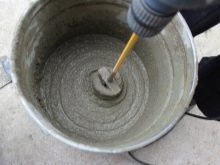
In order to properly cover the facade of a building with plaster, it is necessary, after application, to cover the surface with an opaque material in order to protect it from precipitation and ultraviolet radiation during the day. Plaster walls can be primed and painted 72 hours after completion of work.
Self-leveling floor
- It is advisable to use it indoors, close the windows and doors tightly so as not to create drafts. The room temperature should be within +10 - +25 degrees for at least a week. The base for such a solution must be cleaned and dried. If the concrete is freshly laid, it needs to "stand" for 2-3 months. All exfoliating materials must be cleaned, all places of possible leaks must be carefully sealed.

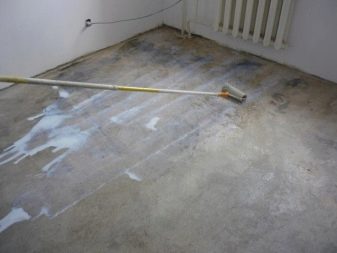
- The prepared surface is best treated with a primer of the same brand. If the floor is applied in several layers, then each of them is primed after drying. Such processing will avoid the appearance of air bubbles inside the frozen solution and will improve the adhesion of the self-leveling floor to the base. A solution is prepared in a plastic container or a special silicone container. Pour dry powder into warm water and stir the solution with a drill or mixer.
- The prepared solution should not be left "to infuse", you should use it immediately.Filling is done manually or using special installations in separate strips with a width of 30 to 50 centimeters, starting from the corner. The solution poured onto the base is leveled with a metal spatula. To release random air bubbles from the solution, you can roll a needle roller over an uncured surface.
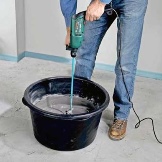
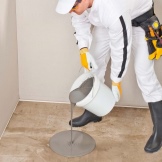
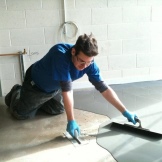
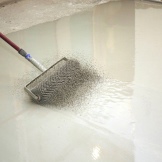
You cannot take breaks when pouring one section of the floor. If the area of the room is so large that it is impossible to process the entire surface at one time, then you should divide it into separate sections using special limiters and carry out the work sequentially.
According to the reviews of real buyers, the products of the Vetonit trademark, at a fairly affordable price, are superior in quality to many analogues in the domestic market. Dry mixes allow you to quickly and easily solve repair and construction issues both in small private apartments and in huge warehouse and industrial premises.
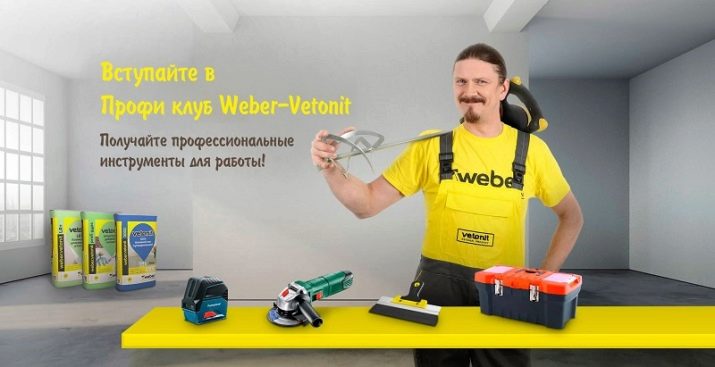
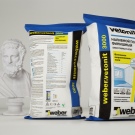


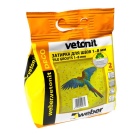
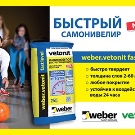
The range of products is so wide that you can choose the material to work in any weather conditions, with any foundations and decorations. The ease of use of Vetonit mixtures allows not only professionals to work with them, but also those who are undertaking repairs in their own home for the first time.
In the following video, Vetonit presents a complete solution for the perfect wall in a living room or bedroom.













The comment was sent successfully.